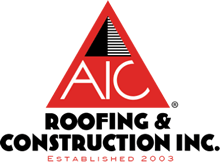Choosing the right type of vent for your roof is crucial for maintaining a healthy and efficient home. Roof ventilation plays a significant role in preventing moisture buildup, regulating temperature, and improving overall air quality inside your house.
At AIC Roofing & Construction, we strive to provide homeowners with transparent information so they can make confident, informed decisions about their home. In this article, we will explore the importance of roof vents, different types available in the market, factors to consider when choosing, installation processes, and maintenance tips.
Understanding the Importance of Roof Ventilation
Roof vents are an integral part of your home’s overall maintenance system. They provide proper airflow by allowing fresh air to enter the attic space while expelling hot, stagnant air. This exchange of air helps prevent the buildup of excess moisture, which can lead to mold, mildew, and even structural damage. Additionally, a well-ventilated roof can contribute to energy efficiency by reducing the strain on your HVAC system.
The Role of Roof Vents in Home Maintenance
One of the primary functions of roof vents is to maintain a balanced airflow in your attic. During hot summer months, without proper ventilation, the attic can turn into a heat trap. This excessive heat can permeate through your ceiling, damaging your roof deck, affecting the overall comfort of your living space and increasing cooling costs. Roof vents prevent this by allowing hot air to escape and allowing fresh air to enter, keeping your attic and home cooler.
But did you know that roof vents also play a crucial role in preserving the lifespan of your roof? Without proper ventilation, the excessive heat and moisture in the attic can cause shingles to deteriorate prematurely. This can lead to leaks, water damage, and the need for expensive repairs or even a full roof replacement. By ensuring adequate airflow, roof vents help to regulate temperature and moisture levels, extending the life of your roof and saving you money in the long run.
Besides thermal control, roof vents also help control moisture levels. When warm, moist air from your living space rises into the attic, it can condense on colder surfaces like the underside of the roof. This condensation can lead to rotting wood, mold growth, and other forms of water damage. Roof vents, by ensuring adequate airflow, help to dissipate this moisture, preventing potentially costly repairs down the line.
How Roof Vents Contribute to Energy Efficiency
In addition to the benefits of temperature and moisture control, proper roof ventilation plays a key role in improving energy efficiency. By reducing the workload on your air conditioning system, a well-ventilated roof can lead to lower energy bills. When hot air is allowed to escape through roof vents, your air conditioner doesn’t have to work as hard to cool your home, resulting in energy savings.
Furthermore, in colder months, roof vents promote better insulation by preventing the accumulation of moisture in the attic. Excess moisture can have detrimental effects on insulation materials, reducing their effectiveness and increasing heat loss. By managing humidity levels, roof vents help maintain the integrity of your insulation, ensuring optimal energy efficiency throughout the year.
Not only do roof vents contribute to energy efficiency, but they also help improve indoor air quality. By allowing fresh air to circulate in the attic, roof vents help remove pollutants, allergens, and odors that can accumulate over time. This can lead to a healthier living environment for you and your family, reducing the risk of respiratory issues and allergies.
In conclusion, roof vents are not just a minor component of your home’s structure; they play a vital role in maintaining a comfortable, energy-efficient, and healthy living space. By ensuring proper airflow and moisture control, roof vents help protect your roof, prevent costly repairs, and save you money on energy bills. So, next time you look up at your roof, remember the importance of those small but mighty roof vents.
Different Types of Roof Vents
Static Vents and Their Benefits
Static vents, also known as passive vents, are the most common type of roof vents. They work by utilizing natural convection to facilitate airflow. As hot air rises, it escapes through the vents, drawing in cooler air from the intake vents located at the bottom of the roof. Static vents are typically low-cost and low-maintenance options and are available in various designs, such as ridge vents, soffit vents, and gable vents.
The benefit of static vents is their simplicity. Since they have no moving parts or power requirements, static vents are considered reliable and quiet. However, it’s essential to ensure that the number and placement of these vents are adequate for proper airflow, as they rely on prevailing winds for ventilation.
Power Vents: Pros and Cons
Power vents, also known as electric vents, are motorized fans that actively expel hot air from your attic. These vents are particularly useful in areas with low wind or extreme weather conditions. Power vents are controlled by a thermostat and turn on when the attic reaches a certain temperature, ensuring efficient ventilation. They are available in different sizes and styles to suit various roof types and aesthetic preferences.
While power vents have the advantage of active ventilation, they do come with some drawbacks. The motors in power vents can create noise, and their reliance on electricity means they may contribute to higher energy consumption. Proper installation and regular maintenance are crucial to ensure optimal performance and prevent potential issues with power vents.
Ridge Vents: What You Need to Know
Ridge vents are installed along the ridge line of your roof and offer continuous ventilation across its entire length. They are considered one of the most effective types of roof vents due to their design and positioning. Ridge vents work by creating a continuous air channel, allowing hot air to escape and fresh air to enter through intake vents located at the lower parts of the roof.
Ridge vents provide several benefits, such as reducing the risk of water infiltration and snow buildup. By running along the highest point of the roof, they are less susceptible to leaks caused by heavy rainfall. Additionally, ridge vents are aesthetically pleasing, as they blend seamlessly with the roofline and do not require any additional protrusions.
Now, let’s delve a little deeper into the world of roof vents. Did you know that there are other types of roof vents besides static vents, power vents, and ridge vents? Let’s explore a couple more options:
Turbine Vents: Harnessing the Power of Wind
Turbine vents, also known as whirlybird vents, are an innovative type of roof vent that utilizes wind power to create ventilation. These vents feature a spinning turbine that is driven by the wind, creating a suction effect that draws hot air out of the attic. Turbine vents are particularly effective in areas with consistent wind patterns.
One of the advantages of turbine vents is their ability to provide ventilation even without electricity or moving parts. The spinning turbine creates a natural draft, expelling hot air and promoting air circulation. However, it’s important to note that turbine vents may not be suitable for areas with low wind speeds or during periods of calm weather.
Factors to Consider When Choosing a Roof Vent
The Size and Design of Your Roof
When selecting a roof vent, it’s essential to consider your roof’s size, slope, and design. Different vents are suitable for specific roof types, so consulting with a roofing professional can help determine the ideal venting solution for your specific needs. The number and placement of vents should also be calculated based on the overall square footage and shape of your roof to ensure proper airflow.
Your Local Climate and Weather Conditions
Climate plays a crucial role in choosing the right roof vent. In warmer and humid climates, vents with larger openings or higher airflow capacity may be required to expel excess heat and moisture effectively. Conversely, in colder climates, vents that prevent the entry of snow and ice are essential to maintain adequate airflow. Understanding your local weather patterns and consulting with professionals will ensure you choose the best venting option for your region.
The Age and Condition of Your Roof
The age and condition of your roof should also factor into your vent selection. Older roofs may have unique requirements, such as retrofitting existing vents or ensuring compatibility with the construction materials. Additionally, if your roof has any existing issues, such as leaks or damage, it’s essential to address those before installing new vents to avoid further complications.
Expert Roof Replacement in Central Kentucky and Cincinnati
Choosing the best type of vent for your roof is crucial for maintaining a healthy and energy-efficient home. Understanding the importance of roof ventilation, considering the different types of vents available, and evaluating factors such as roof size, climate, and installation options are vital steps in making an informed decision. Regular maintenance and care for your roof vent will ensure its optimal performance and contribute to the overall well-being of your home.
AIC Roofing & Construction has served the Louisville, Lexington, Cincinnati and Richmond communities since 2003. We are proud to be in the top 2% of roofing contractors to hold the GAF MasterElite certification. If you’re looking for a top-rated Kentucky roofing company – we’d love to see if we would be a good fit for your project. Contact us today to schedule your free, no-hassle roof inspection.
3-tab attics barns chimney choosing a contractor commercial cost curb appeal DIY estimate financing flashing flat roof GAF glossary gutter replacement gutters gutter size gutter system ice dams inspections insurance missing shingles roof design roofing materials roofing system roof leak roof maintenance roof materials roof repair roof replacement roof shapes roof types shingle ratings shingles siding siding materials siding replacement skylights storm damage underlayment ventilation warranty winter







